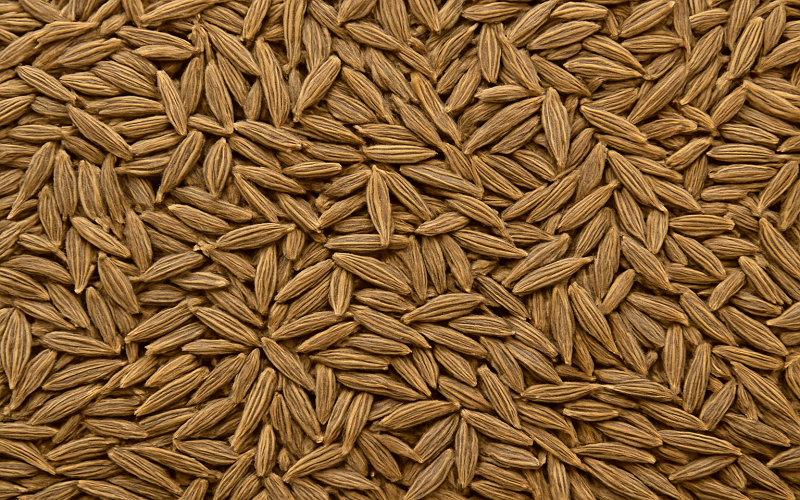Introduction
India is no longer simply the largest producer of cumin it’s entering a more discerning phase where quality, traceability and premium positioning are becoming central. This shift is most evident among leading players in the space of Cumin seeds manufacturers India, who are transforming what was once a bulk commodity chain into a globally relevant, premium supply ecosystem.
The Foundation: Scale, Geography and Rising Production
The backbone of India’s cumin industry lies in two states: Rajasthan and Gujarat. These states together account for the overwhelming majority of Indian output. According to trade analytics, cumin production in Gujarat increased by around 50 % over a five year period, reaching about 429,000 tonnes by FY 2021. More recent data puts production nationally in the ball park of 570,000+ tonnes in 2022-23. For supply chain players acting as Cumin seeds manufacturers India, this means abundant raw-material access, but also heightened responsibility to upgrade downstream systems.
From Commodity to Quality: What Top Tier Manufacturers are doing?
The shift from “just supply lots of cumin” to “supply premium-grade cumin” is visible in several practices. Leading cumin seeds manufacturers India are investing in optical sorting machines, steam sterilisation, moisture-control protocols (targeting <10 % moisture) and strict grading. Global buyers increasingly demand this level of precision.
Meanwhile, exports are booming: India’s cumin shipments in the first seven months of the 2024-25 marketing year reached about 166,000 tonnes versus approximately 96,000 tonnes in the same period the year before. These numbers reflect not only volume but elevation of grade and origin-reliability. For manufacturers, building reputation and relationships of trust in global markets is becoming as important as controlling cost.
Premiumisation, Traceability and Export Readiness
Global spice buyers no longer accept “it smelled like cumin” as sufficient they expect documentation, testing reports, origin traceability and packaging that supports shelf life and presentation. For Cumin seeds manufacturers India, the implication is clear: investments in lab testing (for pesticide residues, mycotoxins), farm aggregation systems that tag lots back to fields, and export compliance infrastructure are no longer optional but strategic.
In addition, niche opportunities are emerging. Organic cumin, high oil content seeds, clean label processing all these attributes are in demand. Market reports suggest India’s organic cumin cultivation has grown significantly. This is opening pathways for manufacturers to differentiate beyond “bulk jeera” and offer value added lots that command higher margins and meet premium food chain requirements.
Overcoming Structural Challenges: Supply, Logistics and Quality Consistency
While the story is increasingly positive, structural risks remain. Weather related yield drops, inconsistent storage and drying facilities, grading irregularities from smaller producers, and fragmented supply chains still create vulnerabilities. Research highlights that in India transportation and logistics inefficiencies and non-standardized sorting practices hamper full value capture.
The most forward looking Cumin seeds manufacturers India are tackling these through farm contracts (ensuring assured supply and defined quality), building drying and storage infrastructure to reduce post-harvest losses, and vertically integrating from procurement through processing to export packaging. This integrated model is helping firms reduce variability, meet buyer demands and stabilise supply.
Global Demand Dynamics Favouring Indian Manufacturers
Several trends drive the moment. First, ethnic foods, snacks with seasoning blends, and flavour rich cuisines have globalized more rapidly in recent years raising demand for cumin beyond its traditional uses. Market analysis places India’s dominance in global supply at approximately 75 – 80 %. Second, export prices for cumin have risen: one report notes Indian export pricing ranged USD 7.73–21.20/kg in 2024 compared to USD 5.93–20.23/kg prior. Third, emerging markets and health‐driven consumers seek spices with provenance, consistent aroma profile and minimal contamination attributes that the better cumin seeds exporters are now offering.
In this environment, manufacturers based in India have major advantages: deep agrarian clusters in Rajasthan/Gujarat, processing infrastructure increasingly upgraded, export logistics platforms already servicing spice shipments and the ability to scale. The critical differentiator now is: who can move from “volume alone” to “quality and reliability at scale.”
Implications for Global Purchasers, Brands and Supply-Chain Stakeholders
For buyers sourcing cumin, the transformation in India matters. It means that selection of a manufacturer should weigh far more than price per kg. Criteria should include documented lot traceability, processing credentials (optical sorting, sterilisation), export certification status, packaging and logistics readiness, and the manufacturer’s supply chain stability. The pool of Cumin seeds manufacturers India capable of delivering these is growing, and engaging early with those who are upgrading will provide advantage in quality, cost control and market timing.
Brands offering seasoning blends, snack flavours or international cuisines can differentiate their offering by selecting higher grade cumin lots (e.g., premium whole seeds, high aroma small seed types) from Indian manufacturers who certify moisture, purity and origin. The premiumisation trend means that the margin upside is real not just cost avoidance.
Looking Ahead: What the Cumin Revolution will Deliver?
In the next few years, the industry in India will likely continue to evolve along several axes: deeper automation in sorting and packaging, digital traceability from farm field to export crate, more contract farming tie ups to lock quality and volume, expansions of organic and specialty seed cultivation, and increased value added processing (e.g., cumin oils, oleoresins) by the leading Cumin seeds manufacturers India.
As that evolution continues, the “bulk cumin supplier” role will shrink in relative terms and the “premium global cumin partner” role will expand. For global markets the upshot: better aroma, more consistent delivery, clearer origin story and better alignment of supply chain to food safety and brand standards. For manufacturers in India, the upshot: shifting from commodity margins into differentiated value chain positioning, and global growth.
Closing Note
The transformation of India’s cumin landscape is quietly reshaping how spices are sourced, processed and branded globally. The top-tier Indian manufacturers of cumin seeds are no longer just milling large volumes they are building reliability, quality and traceability systems. For any stake in the global seasoning, snack or food ingredients business, engagement with the right Cumin seeds manufacturers India is no longer a supply decision it is a strategic move.
FAQs
- What are the primary states of cultivation for camera-grade cumin in India?
The major states are Gujarat and Rajasthan they account for a massive chunk of India’s cumin production and harvest. Essentially between the two of them they cover most of India’s cumin acreage and production.
- What processing features are now considered standard for export-grade cumin seeds from India?
Exports increasingly demand machine cleaning, optical sortation, moisture controls under 10%, documented purity of 99%+, and minimal foreign matter often meeting specifications labelled “Singapore-99” or “Europe-grade”.
- How should global food brands evaluate Indian cumin suppliers today?
Evaluate beyond price: review sample test reports, inspect processing facilities, confirm supply contract models, ask for traceability records, and assess the supplier’s capability to service private label packaging and consistent global shipments.



